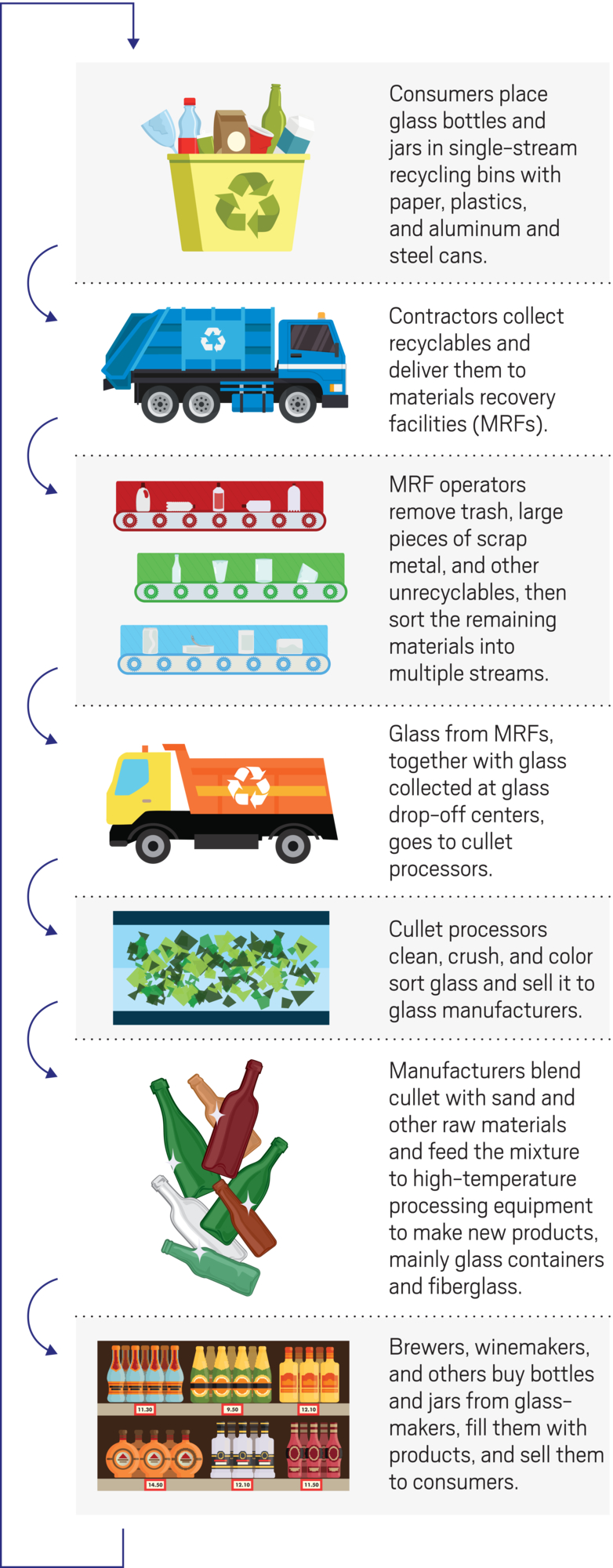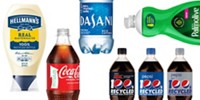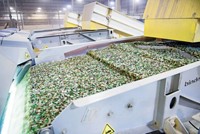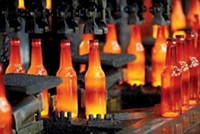Advertisement
Grab your lab coat. Let's get started
Welcome!
Welcome!
Create an account below to get 6 C&EN articles per month, receive newsletters and more - all free.
It seems this is your first time logging in online. Please enter the following information to continue.
As an ACS member you automatically get access to this site. All we need is few more details to create your reading experience.
Not you? Sign in with a different account.
Not you? Sign in with a different account.
ERROR 1
ERROR 1
ERROR 2
ERROR 2
ERROR 2
ERROR 2
ERROR 2
Password and Confirm password must match.
If you have an ACS member number, please enter it here so we can link this account to your membership. (optional)
ERROR 2
ACS values your privacy. By submitting your information, you are gaining access to C&EN and subscribing to our weekly newsletter. We use the information you provide to make your reading experience better, and we will never sell your data to third party members.
Inorganic Chemistry
Why glass recycling in the US is broken
Americans turn old bottles into new ones at much lower rates than people in other countries. A recent analysis explains why
by Mitch Jacoby
February 11, 2019
| A version of this story appeared in
Volume 97, Issue 6

Credit: Owens-Illinois | Straight out of the furnace, new glass bottles move down the manufacturing line.
In brief
Glass can be recycled endlessly by crushing, blending, and melting it together with sand and other starting materials. Doing so benefits manufacturers, the environment, and consumers. Yet each year only one-third of the roughly 10 million metric tons of glass that Americans throw away is recycled. The rest ends up in landfills. In contrast, some European countries recycle more than 90% of their waste glass. US glass-industry trade groups are working with manufacturers and government agencies to boost the numbers. These efforts begin with a top-to-bottom analysis of glass recycling to identify areas for improvement.
Americans dispose of some 10 million metric tons of glass annually. Most of it ends up in the trash. Only about one-third gets recycled. That’s not because of some intrinsic materials or chemical property that makes glass difficult to recycle.
“Glass is 100% recyclable,” says Robert Weisenburger Lipetz, executive director of the Glass Manufacturing Industry Council (GMIC), a nonprofit trade association. “It has an unlimited life and can be melted and recycled endlessly to make new glass products with no loss in quality,” he adds.
And the US’s roughly 33% glass-recycling rate, which pales compared with the 90% recycling rate in Switzerland, Germany, and other European countries, is not the result of a lack of technical know-how.
“Recycled glass is nearly always part of the recipe for making new glass,” says Joseph J. Cattaneo, executive director of the Glass Packaging Institute (GPI), a trade association representing the North American glass-container industry. The glass industry regularly mixes cullet—a granular material made by crushing bottles and jars usually collected from recycling programs—with sand, limestone, and other raw materials to produce the molten glass needed to manufacture new bottles and jars.
Manufacturers agree that using cullet benefits glassmakers, the environment, and consumers. And national surveys show that Americans overwhelmingly favor glass recycling and deem it to be important. Yet as the percentage of glass recycled in Spain and the UK, for example, has doubled and tripled in the past 25 years, respectively, the numbers in the US have barely budged.
“There are many reasons why more glass isn’t recycled in the US,” says David Rue, an engineer at the Gas Technology Institute near Chicago who recently completed a yearlong study of US glass recycling as a consultant for GMIC. The US glass-recycling shortfall comes down to the interplay between the quality and availability of cullet and the economics of making glass, he explains. And, he says, the recycling rate discrepancies between the US and other countries result mainly from differences in government policy and consumer education and habits. By understanding these hurdles to glass recycling, GMIC, GPI, and other industry groups hope to boost the rate in the US.
Glass recycling by the numbers
-
10 million
metric tonsof glass is disposed of every year in the US.
-
33%
of waste glassgets recycled in the US.
-
90%
of disposed glassgets recycled in several European nations, on average.
-
40%
of glassthrown into single-stream recycling collections actually gets recycled.
-
90%
of glassput into multistream collections gets recycled.
-
5%
of CO2 emissionsare cut for every 10% of glassmaking mix substituted with cullet.
Cullet’s many benefits
When studying glass recycling, the first thing that becomes clear is that cullet is extremely useful. It provides many benefits to glass manufacturing.
First, cullet allows glass manufacturers to reduce their need for raw materials. The key ingredients used in glassmaking are sand (mainly silica, SiO2), sodium carbonate (also known as soda ash, Na2CO3), and limestone (CaCO3). One kilogram of cullet replaces 1.2 kg of raw materials, according to James V. Nordmeyer, vice president of global sustainability at Owens-Illinois, a major manufacturer of glass bottles and containers.
Cullet also helps manufacturers save on energy costs. For every 10% of cullet included in the glassmaking feed mixture, the energy needed to keep the furnace at temperatures high enough to generate molten glass falls by nearly 3%, Rue says. Running furnaces at lower temperatures extends furnace lives and reduces operating costs and, as a result, the price of the final glass products.
According to Pennsylvania State University’s John C. Mauro, adding cullet to the feed mixture also improves the quality of glass products. Mauro is a materials scientist and glass specialist who spent nearly 20 years at the glassmaker Corning. He explains that melting cullet doesn’t release carbon dioxide or other gases that can form unwanted trapped bubbles in the glass. Also, using cullet limits the deposition of crystals of unmelted starting materials, as well as the formation of streaks and optical imperfections due to incomplete mixing of those materials.
Finally, cullet has a significant environmental benefit. Adding the material to the mix reduces greenhouse gas emissions during manufacturing, Nordmeyer points out. When the carbonates from limestone melt with the other materials, they release CO2. Using 10% cullet in the manufacturing feed lowers emissions of CO2 by roughly 5%. Basically, for every 6 metric tons of cullet used in manufacturing, glassmakers can cut 1 metric ton of CO2 emissions.
The problems with US recycling
Despite cullet’s long list of benefits, glassmakers are limited by what recycled material is available to them at a manageable cost. Getting cullet in a clean, furnace-ready form generally requires a lot of processing. And depending on how the US recycles, that processing is done relatively inefficiently compared with what happens in Europe.
US municipalities manage residential recycling primarily via single-stream curbside collection. Single-stream means residents use their recycling bins to comingle glass with aluminum and steel cans, various types of plastic, newsprint, junk mail, cardboard, and other paper products.
Glass recycling loop

People also tend to throw in a lot of things that shouldn’t go in the bin, such as plastic bags, batteries, light bulbs, soiled food containers, used napkins, and what Nordmeyer and others call “wish-cycling” materials. One example is a popular single-serve coffee-brewing product that features a plastic cup and foil lid. Well-meaning people think since those components can be recycled, they’re justified in tossing the whole thing—dirty filter, wet coffee grounds, and all—into a recycling bin.
Garbage, like those products, contaminates all the recyclables in the bin, Nordmeyer says. “You have to sort through all the trash to get to the material that manufacturers want and are willing to pay for.”
That sorting happens via a combined manual-plus-automated multistep process at a materials recovery facility. About 400 such facilities operate in the US, according to Rue.
To start the sorting process, front-end loaders dump huge piles of single-stream recyclables onto conveyor belts. Trained operators manually remove scrap metal, textiles, hoses, and other materials that never belonged in the recycling bin and can damage sorting equipment. Next, automated separators called star screens, together with powerful air jets, remove cardboard and paper, while magnets pull out iron-containing materials. After several more separation steps, a device known as a glass-breaking screen removes most of the glass from the single-stream load so it can be sent to cullet suppliers, who clean it and make it furnace ready for glass manufacturers.
Multistream recycling, which is a far less common approach in the US, is simpler on the processing end. In these programs, consumers separate glass from other recyclables, depositing them in glass-only collection bins. This type of collection requires a high level of consumer education and is considerably more expensive than single-stream collection. But glass from multistream collection is much cleaner than what comes out of the single-stream supply. Multistream glass typically bypasses materials recovery facilities and goes directly to cullet processors. Because of the difference in the quality of glass from the two streams, just 40% of glass from single-stream collection ends up being recycled into new products, compared with about 90% of glass from multistream systems.
So one key factor that stands in the way of the US glass industry’s ability to boost recycling numbers is the limited availability of satisfactory cullet produced via single-stream processing. “Large quantities of high-quality cullet are essential to further increase the recycled content in our products,” says Frank O’Brien-Bernini, vice president and chief sustainability officer for Owens Corning, a major fiberglass manufacturer.
Compared with multistream recycling, “single stream is an inherently inefficient and expensive recycling method,” Lipetz says. But most municipalities in the US stick with single stream because the collection costs are lower than those with multistream systems. To switch to multistream systems, these municipalities would need to introduce taxes or fees to meet the higher collection and handling costs. And most municipalities are reluctant to do so.
But even if the US shifted more to multistream collection, there are other economic factors standing in the way of increasing glass-recycling rates to European levels. One significant difference between the US and European nations is size. Distances in the US between a materials recovery facility and a cullet supplier, or a cullet supplier and a buyer tend to be greater. Transporting glass waste and cullet is costly because of their weight, and those costs can be a deal breaker for some glassmakers and can prevent would-be cullet suppliers from opening processing facilities. For example, in the US, some materials recovery facilities do not recover any glass from their single streams because there are no nearby buyers to make it worthwhile, according to Rue.
Another factor affecting the costs of recovering cullet from glass waste is that cullet specifications vary from one manufacturer to another depending on the intended application. If a supplier needs to process multiple types of cullet to meet various manufacturers’ needs, their production costs increase. In addition, common soda-lime cullet made from bottles and jars isn’t compatible with window glass and the type of fiberglass used in reinforced composites, further limiting recycling opportunities.
These costs and limited supplies of quality cullet continue to stand in the way of US manufacturers increasing their use of recycled material. “We are a ready and willing customer for increased output from consumer recycling,” O’Brien-Bernini says, but the economics of producing cullet aren’t always favorable for would-be suppliers.

Recycling locally
Most of the efforts to boost glass-recycling rates in the US have been state and local affairs. For example, 10 states have passed so-called bottle bills that require consumers to pay deposits on beverage bottles. The idea is consumers will be more likely to recycle the bottles to get back their deposits. The laws are having the intended effect. In states with those laws, 98% of bottles are recycled, compared with the national average of roughly 33%.
A few communities have set up bottle-redemption centers and instituted separate curbside glass collection. California passed legislation requiring that insulation glass used in the state contain 30% cullet and that container glass be made with at least 35% cullet. And North Carolina enacted an on-premise recycling bill that requires alcoholic-beverage-permit holders to recycle bottles and cans.
But sometimes solving a problem requires grabbing the bull by the horns. That’s what Boulevard Brewing did about 10 years ago. The Kansas City, Missouri–based beer maker bemoaned the absence of an active local recycling program, which meant that millions of its empty beer bottles were ending up in landfills. There was hardly any recycling in the community because there was no local cullet processor. And there was no processor because locals didn’t recycle much. “It was a classic chicken-and-egg problem,” says Michelle Goth. So Boulevard helped launch Ripple Glass, a cullet supplier for which Goth serves as general manager.
Following a European model, Ripple placed 60 large glass-only collection bins across Kansas City and nearby locations and has been successful in spreading the word about the benefits of recycling. The effort has driven locals to regularly fill the bins with clean, high-quality recyclable glass. The majority of Ripple’s cullet feeds the local Owens Corning fiberglass plant, and a portion goes to a beer-bottle maker in Tulsa, Oklahoma, that supplies Boulevard and other companies with new bottles.
Advertisement
Will efforts like these local and state ones bump up recycling rates across the US? Probably not quickly, experts say.
It’s unlikely in the foreseeable future that the economics of recycling in communities throughout the US will change to favor multistream recycling collection, as is commonly practiced in Europe, Lipetz says. Another factor helping Europe maintain high recycling rates is high landfill costs, which make trashing glass in those countries more expensive than recycling. And, unlike in the US, recycling is legislated in many European countries nationally, not locally.
Finally, in Europe, “recycling is the cultural and social norm,” Nordmeyer says. Europeans have been recycling for many years, and children there are educated about it at school and at home starting at a young age. “In the US, we tend to teach to the test, and recycling isn’t on the test,” he says. “But it should be.”





Join the conversation
Contact the reporter
Submit a Letter to the Editor for publication
Engage with us on Twitter